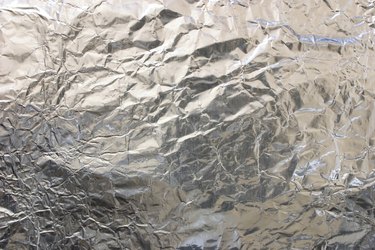
Freezing your food will keep it food-safe almost indefinitely, but its quality usually will begin to suffer after just a few months. As a rule, the better wrapped your food is -- and the more air is excluded -- the longer your foods will remain tasty, rather than just edible. This puts a premium on wrapping materials such as aluminum foil, which are flexible and can be pressed directly to the food's surface.
Direct Wrapping
Video of the Day
Ordinary lightweight foil rips too easily to be of much use in the freezer, but good, heavy-duty foil makes an excellent wrapping material. It's best used with foods that are relatively dry or contained in their own skin, such as sausages and hams, which are less likely to freeze to the foil. For wetter foods such as chops or fish fillets, choose coated, non-stick foil, which will release more easily, and without tearing. Avoid wrapping acidic items such as fruit or tomatoes, which react chemically with the foil.
Video of the Day
Foil Overwrap
When you're freezing wet or acidic foods that aren't foil-friendly, one alternative is to encase them first in plastic film wrap or freezer bags and then use foil as the overwrap. Plastic food wrap is slightly porous and permits air to pass, although slowly. By overwrapping each parcel of frozen food with an airtight layer of foil, you're providing a second layer of protection against the freezer's arid atmosphere and extending the life of your frozen foods.